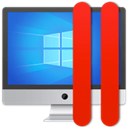Top xhypervisor Alternatives: Finding the Best Hypervisor for Your Needs
Xvisor® (xhypervisor) is a compelling open-source type-1 hypervisor, praised for its monolithic, lightweight, portable, and flexible virtualization capabilities. It offers high performance and a low memory footprint across various CPU architectures, notably supporting ARM CPUs even without virtualization extensions. However, for some users, specific features, platform compatibility, or broader community support might lead them to seek a suitable xhypervisor alternative. This article explores some of the best virtualization solutions available today that can serve as excellent substitutes for xhypervisor.
Top xhypervisor Alternatives
Whether you're looking for a more feature-rich environment, broader operating system support, or a different licensing model, there's a hypervisor out there to meet your specific requirements. Let's dive into the top alternatives to xhypervisor that deserve your attention.

VirtualBox
VirtualBox is a powerful and widely adopted x86 and AMD64/Intel64 virtualization product suitable for both enterprise and home use. As a free and open-source solution, it's a great xhypervisor alternative for users on Mac, Windows, Linux, BSD, and Solaris platforms. Its features include robust virtualization, the ability to open VMDK files, and support for multiple languages, making it a versatile choice.

QEMU
QEMU, short for "Quick EMUlator," is a free and open-source hosted hypervisor that performs hardware virtualization. It's an excellent xhypervisor alternative for those seeking a highly flexible and scriptable solution across Mac, Windows, Linux, and BSD. QEMU excels in virtualization, operating system emulation, and offers portability, including user mode emulation.

VMware Workstation Pro
VMware Workstation Pro is a commercial hypervisor that enables users to create and run virtual machines on a single computer. Available for Windows and Linux, it provides a feature-rich virtualization experience, including support for Android Things and multiple languages, making it a professional-grade xhypervisor alternative for those willing to invest.

VMware Workstation Player
Building on the robust foundation of Workstation Pro, VMware Workstation Player delivers a streamlined user interface for creating and running operating systems. It's a free personal-use option for Windows and Linux, focusing on core virtualization capabilities and providing an easy-to-use xhypervisor alternative for individual users.

KVM (Kernel-based Virtual Machine)
KVM is a full virtualization solution for Linux on x86 hardware with virtualization extensions. As a free and open-source solution, it's a strong xhypervisor alternative for Linux and Android environments. KVM is known for being extensible by plugins/extensions and its deep integration with the Linux kernel, offering high performance and flexibility.

Parallels Desktop
Parallels Desktop empowers Mac users to seamlessly run Windows, Linux, or other operating systems alongside macOS. This freemium offering provides robust virtualization, the ability to run Windows software, and comprehensive operating system support, making it an excellent xhypervisor alternative specifically for Mac users.

OpenStack
OpenStack is a global collaboration producing a ubiquitous open-source cloud computing platform. While broader than a simple hypervisor, its virtualization components make it a powerful xhypervisor alternative for those building and managing large-scale cloud infrastructures. It's a free, open-source, web-based solution ideal for cloud IDEs and web development.

Portable Virtualbox
Portable VirtualBox is a free and open-source software tool that allows you to run any operating system directly from a USB stick without separate installation. This Windows-based, portable solution with GNU/Linux-libre support and virtualization features makes it a unique and convenient xhypervisor alternative for on-the-go virtualization needs.

VMware vSphere Hypervisor
VMware vSphere Hypervisor (based on ESXi) is a free bare-metal hypervisor that virtualizes servers to consolidate applications on less hardware. As a commercial solution available for Windows, Linux, NVIDIA vGPU, and AMD MxGPU, its robust virtualization capabilities make it a strong xhypervisor alternative for server consolidation and enterprise environments.

XCP-ng
XCP-ng is a high-performance, enterprise-level hypervisor with a rich ecosystem, resulting from extensive community and company cooperation. This free and open-source Linux-based solution, supporting NVIDIA vGPU and AMD MxGPU, offers features like live migration, clustering, high availability, and disaster recovery. Its comprehensive feature set makes it a powerful and flexible xhypervisor alternative, especially for those seeking enterprise-grade open-source options.
The world of virtualization offers a diverse range of hypervisors, each with its unique strengths. While xhypervisor provides a robust and lightweight solution, exploring alternatives like VirtualBox for ease of use, QEMU for flexibility, or VMware products for enterprise-grade features can help you find the perfect fit for your specific virtualization needs and technical requirements. Consider factors like platform compatibility, open-source preferences, and specific features when making your choice.